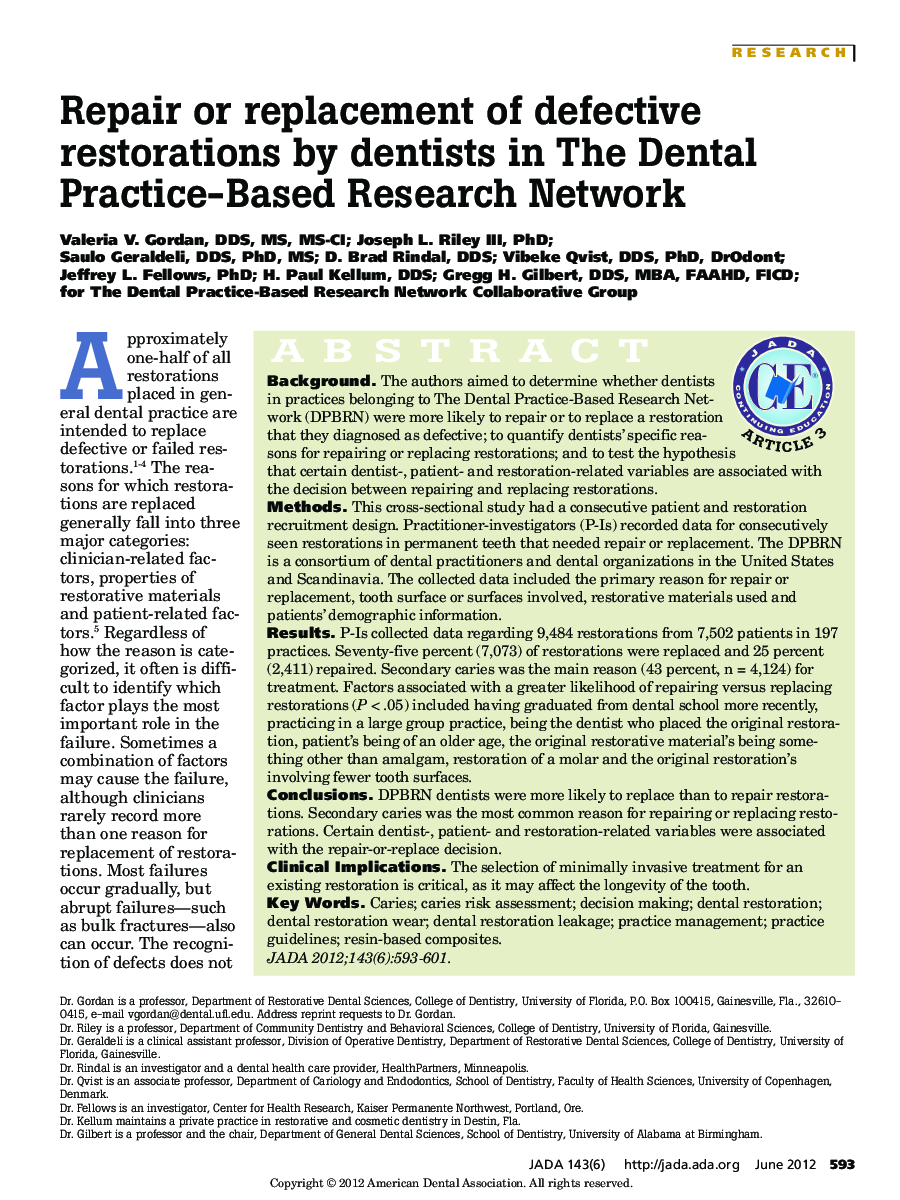| Article ID | Journal | Published Year | Pages | File Type |
|---|---|---|---|---|
| 3138023 | The Journal of the American Dental Association | 2012 | 9 Pages |
ABSTRACTBackgroundThe authors aimed to determine whether dentists in practices belonging to The Dental Practice-Based Research Network (DPBRN) were more likely to repair or to replace a restoration that they diagnosed as defective; to quantify dentists' specific reasons for repairing or replacing restorations; and to test the hypothesis that certain dentist-, patient- and restoration-related variables are associated with the decision between repairing and replacing restorations.MethodsThis cross-sectional study had a consecutive patient and restoration recruitment design. Practitioner-investigators (P-Is) recorded data for consecutively seen restorations in permanent teeth that needed repair or replacement. The DPBRN is a consortium of dental practitioners and dental organizations in the United States and Scandinavia. The collected data included the primary reason for repair or replacement, tooth surface or surfaces involved, restorative materials used and patients' demographic information.ResultsP-Is collected data regarding 9,484 restorations from 7,502 patients in 197 practices. Seventy-five percent (7,073) of restorations were replaced and 25 percent (2,411) repaired. Secondary caries was the main reason (43 percent, n = 4,124) for treatment. Factors associated with a greater likelihood of repairing versus replacing restorations (P N/A .05) included having graduated from dental school more recently, practicing in a large group practice, being the dentist who placed the original restoration, patient's being of an older age, the original restorative material's being something other than amalgam, restoration of a molar and the original restoration's involving fewer tooth surfaces.ConclusionsDPBRN dentists were more likely to replace than to repair restorations. Secondary caries was the most common reason for repairing or replacing restorations. Certain dentist-, patient- and restoration-related variables were associated with the repair-or-replace decision.Clinical ImplicationsThe selection of minimally invasive treatment for an existing restoration is critical, as it may affect the longevity of the tooth.
